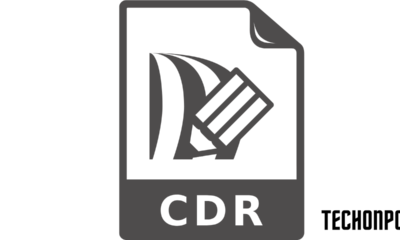Education
What Are Data-Driven HR Strategies?
Published
12 months agoon
By
techonpc
Human resources (HR)
Human resources (HR) is run by humans for humans, which leaves countless margins for human error and ambiguity. To curtail these inefficiencies and remove unsubstantiated bias in decision-making, HR leaders and managers use concrete measurements about employees and operations to guide their decisions, creating data-driven HR strategies.
Using data-driven strategies, an organization can optimize every aspect of its HR activities —from recruitment and L&D to compensation and benefits— to better align operations with its goals and enhance employee satisfaction.
Implementation
As a basic guide, an organization can implement data-driven strategies by following the below procedure:
Define HR goals
As a precursory first step, HR leaders should speak to administrators to identify their organization’s overall short- and long-term strategic missions, visions, and goals. HR’s goals should align with and work to support these company-wide objectives, or else their efforts will be for naught.
If you’re unsure which aspect of HR to begin optimizing, this site covers all areas of human resource management – a quick perusal may provide some inspiration.
Hypothesize
Next, HR leaders should hypothesize what actions and strategies will achieve their HR goals. For example, if HR aims to improve worker competency, managers may hypothesize that hiring employees with more professional credentials will improve employee output.
Identify KPIs
As with any other data-driven strategy, there must be a systematic and objective way to measure progress. Identify key performance indicators (KPIs) and metrics related to your goals that will provide insight into your strategy’s effectiveness.
HR can source data from places such as performance reviews, employee surveys, demographic information, and interviews. For best results, measure both qualitative and quantitative data – but be aware that quantitative data will be easier to gather and compare.
Measure each metric beforehand to serve as a benchmark for your strategy. If possible, use previous records to calculate the natural variance of the data.
Systematically collect data
Next, implement the HR strategy and regularly measure the KPIs set in the previous step. An organization may invest in a Human Resource Management System (HRMS), Enterprise Resource Planning (ERP) tool, or other automation software to aid in this step.
How long HR should collect data depends on the strategy implemented – however, considering the natural inertia of human behavior and conditions, it may be optimal to wait at least a few months before making conclusive statements.
Analyze and adjust
Finally, gather all the data collected in a database or spreadsheet, and analyze trends to conclusively determine if the implemented HR strategy was effective.
If it was, the organization could happily invest more into it and continue the strategy. If the data shows a negative correlation, the activities should be stopped immediately. And if the data proves inconclusive, decision-makers could choose either course of action according to the cost and effort of implementation.
Benefits
By testing and implementing data-driven HR strategies, HR leaders and managers can gain a holistic view of employee performance and satisfaction, allowing them to uncover opinions and trends they may have missed from their position.
By hypothesizing, measuring, and analyzing key data, HR professionals can optimize functions such as:
Recruitment
With a data-driven strategy, HR can allocate its resources and time to the recruitment processes and channels that generate the most qualified candidates, determine which compensation packages attract the best candidates, and eliminate bias in the hiring process with objective skill assessments.
Some metrics HR can use to measure its recruitment strategies are average time-to-fill, cost per hire, and conversion rate.
Workforce Planning
HR can measure and analyze its workforce composition, performance, and attrition rates, comparing them to organizational growth patterns and future plans to pre-emptively determine if HR needs to hire or let go of employees.
By testing the efficacy of retention strategies, HR can also reduce attrition and improve employee satisfaction, resulting in a loyal and longstanding workforce.
Employee Performance
Data and analytics can reveal trends in employee performance over time, letting HR managers know if an employee needs more support and training or to be let go of entirely.
Employees will be much more amenable to performance reviews if they know the evaluations are based on objective data rather than manager opinions. This improves employee morale.
HR can also track employee performance before and after a learning and development program to determine the efficacy of the training itself. If it proves useful, HR can then deploy the program across the organization to exponentially increase the skill level of the entire employee body.
Expense Management
Finally, by measuring the performance of employees, strategies, and procedures, HR can objectively weigh whether or not activities are worth their expenses, cutting down on unnecessary costs.
HR can also run analytics on the payroll process itself, measuring the number of delayed payments, off-cycle payments, and payroll issues to determine the effectiveness of its payroll process.
Final Thoughts
Data-driven strategies ensure that the HR department is working in tandem with its organization’s broader goals by impartially determining the most effective courses of action and removing bias. With data-driven HR strategies, HR professionals can adeptly adapt to the changing HR landscape and rest assured in the knowledge that they’re making the right decisions.
Follow Me

Unleashing the Power of the Office Accelerator: Maximizing Productivity and Efficiency in the Workplace with Office 365 Accelerator

Unlocking the Hidden Potential of Your Website: Strategies for Growth

From AI to VR: How Cutting-Edge Tech Is Reshaping Personal Injury Law in Chicago
Trending

 Microsoft4 years ago
Microsoft4 years agoMicrosoft Office 2016 Torrent With Product Keys (Free Download)

 Torrent4 years ago
Torrent4 years agoLes 15 Meilleurs Sites De Téléchargement Direct De Films 2020

 Money4 years ago
Money4 years ago25 Ways To Make Money Online

 Torrent4 years ago
Torrent4 years agoFL Studio 12 Crack Télécharger la version complète fissurée 2020

 Education3 years ago
Education3 years agoSignificado Dos Emojis Usado no WhatsApp

 Technology4 years ago
Technology4 years agoAvantages d’acheter FL Studio 12

 Technology4 years ago
Technology4 years agoDESKRIPSI DAN MANFAAT KURSUS PELATIHAN COREL DRAW

 Education3 years ago
Education3 years agoBest Steph Curry NBA 2K21 Build – How To Make Attribute, Badges and Animation On Steph Curry Build 2K21

You must be logged in to post a comment Login